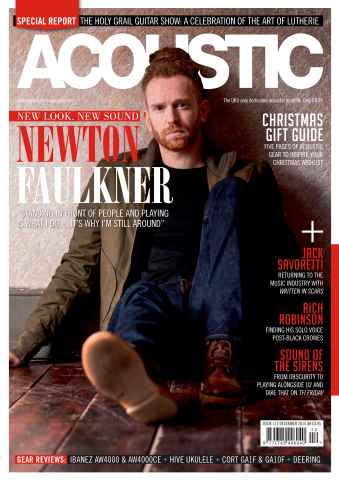
Acoustic | December 2015
In the last month I was invited as a guest of Yamaha Guitars to tour their manufacturing facilities in both Hamamatsu, Japan, and Hangzhou, China. The opportunity arose because of some very exciting new guitar products Yamaha will be launching soon. I’m sworn to secrecy but, suffice to say, Yamaha is set for a big 2016. And, of course, we’ll be bringing you the news and reviews of the new models as soon as we can.
I’ve enjoyed many factory tours, but this one was different – mainly because of the sheer size of the facilities and the volume of production involved. Walking around watching skilled workmen and women ply their craft reminded me how individual a guitar actually is. Yes, large numbers were being produced, but each guitar was receiving such a great deal of care and attention it was bound to create a degree of personality within the guitar – even if it’s the inferred personality of the craftsmen involved.
I couldn’t help but wonder if any of the guitars I was watching be sanded, sprayed or assembled would end up in a shop near me? Part of the factory tour included a visit to the Yamaha Museum, which is home to a whole array of historic, rare and desirable Yamaha guitars – some of which were available to be played. Among the exhibits was a guitar used by Jimmy Page during the 1980s and subsequently donated back to the museum. However, for me, the most interesting guitar was an FG180 from the 1950s. Though somewhat battle-scarred, the guitar was an absolute joy to play. A rich, warm and character-filled tone emerged with the minimum of effort. I commented to our tour guide how much I liked the vintage tone of the guitar. His response was to remind me that the FG180 was a laminate back and sides model. I was taken aback as I had wrongly assumed a guitar that sounded this good had to be all-solid – an assumption likely based on a measure of acoustic-snobbery.
read more
read less
As a subscriber you'll receive the following benefits:
• A discount off the RRP of your magazine
• Your magazine delivered to your device each month
• You'll never miss an issue
• You’re protected from price rises that may happen later in the year
You'll receive 13 issues during a 1 year Acoustic magazine subscription.
Note: Digital editions do not include the covermount items or supplements you would find with printed copies.
Articles in this issue
Below is a selection of articles in Acoustic December 2015.